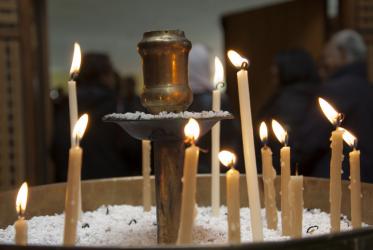Église anglicane d'Aotearoa/Nouvelle-Zélande et de Polynésie
(Te Hahi Mihinare ki Aotearoa ki Niu Tireni, ki Nga Moutere o te Moana Nui a Kiwa)
In 1814 the Nga Puhi Maori chief agreed to protect three missionary families who had landed at Oihi in the Bay of Islands. And so, on Christmas Day that year the first Anglican sermon was preached there, and the Anglican Church was established in these islands. Despite some early problems, missionary work - including Christian teaching in the Maori language - spread quickly throughout the country. From 1823, the work was guided by the Church Missionary Society. After 1840, European settlers, mainly from England and Scotland, began to arrive in force, and a new focus emerged: the formation of the church in the new colonial settlements. In 1857, a conference held in Auckland agreed on a constitution for the church, which then became an autonomous province. The second half of the 19th century was dominated by the work of establishing parishes and churches. The church among the Maori people suffered during this period from fragmentation caused by the wars of the 1860s, and a general policy of assimilation to European structures and practices.
The two world wars and the depression dominated the first half of the 20th century. The characteristic feature of the post-war phase was the building of a distinctly New Zealand church, with New Zealanders themselves taking the leadership of that church. In the fields of liturgy, social attitudes, and the place of women in the ordained ministry, the church has been increasingly confident about its own convictions and insights. The charismatic movement has also made an important contribution to the life of the Anglican Church in New Zealand. Women were first ordained to the priesthood in 1977, and in 1990 the Rev. Dr Penny Jamieson was ordained as Bishop of Dunedin, the first woman diocesan bishop in the Anglican Communion.
The Anglican Church in the islands of Polynesia (principally in Fiji, Tonga and Western Samoa) was established as an associated missionary diocese in 1925. In 1990, the diocese of Polynesia became a diocese in its own right.
Since the 1970s, the Maori people in New Zealand have moved out of the shadow of European dominance. The church committed itself to a re-examination of the principles of bi-cultural development and partnership stemming from a reconsideration of the Treaty of Waitangi signed in 1840 between the British crown and the Maori tribes of New Zealand. The General Synod/Te Hinota Whanui adopted a revised constitution in 1992, which provides an opportunity for Maori, Pakeha (European New Zealanders) and Polynesian Anglicans to express their own tikanga (a key Maori term, meaning way, style or culture). The church is now a partnership of three streams - Tikanga Maori, Tikanga Pakeha, Tikanga Pasifika, which can express their minds as equal partners in the decision-making process of the general synod, and each exercise mission and ministry to God's people in their own ways. With the adoption of this constitution, the Church of the Province of New Zealand became the Anglican Church in Aotearoa, New Zealand and Polynesia.
Last updated:11/04/08
